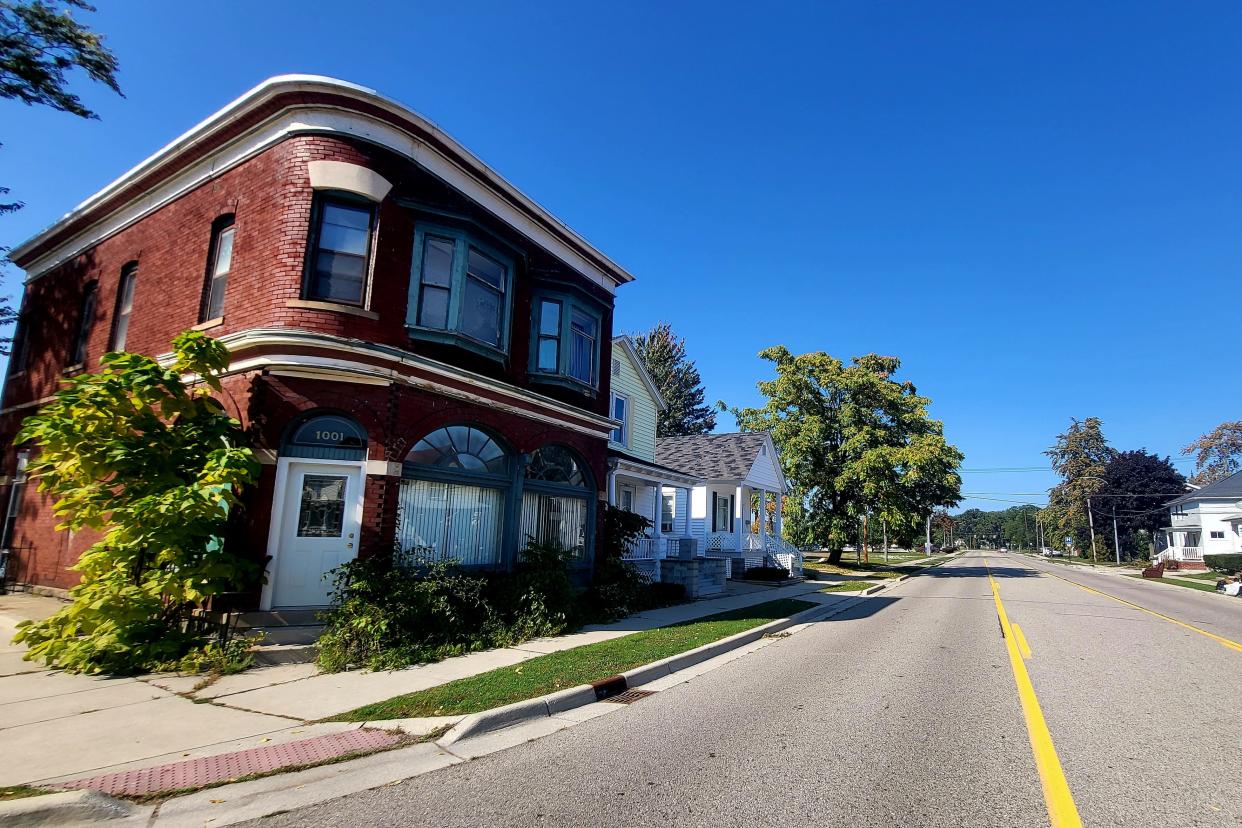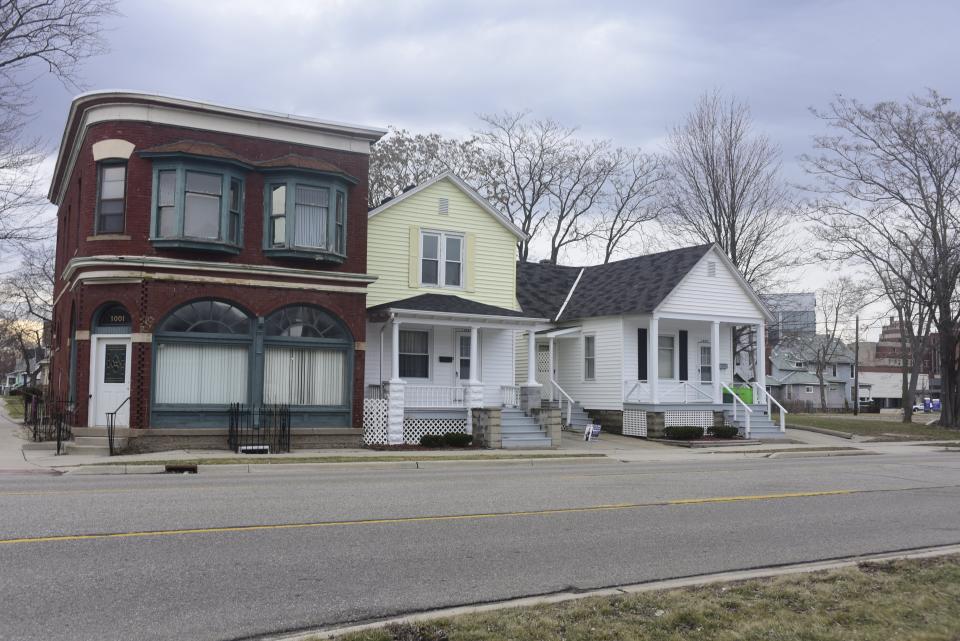City OKs study to address housing shortage, future needs

While two major residential projects around city-backed property sit in limbo, Port Huron officials hope commissioning a new study of local housing needs could aid those and future developments in addressing the ongoing housing shortage.
City Council members signed off on a $25,250 bid from Zimmerman/Volk Associates to conduct a target-market analysis during last Monday’s regular meeting, marking the city’s first housing analyses of any kind in seven years and the first major comprehensive study since 2007, according to officials.
The New Jersey-based firm’s proposal outlined a study area that includes the city’s central business district around downtown and surrounding neighborhoods, as well as the redevelopment potential in areas of northern and southern Port Huron — namely around the old waterfront Dunn Paper property and Cleveland Elementary, respectively.
It’s a push that comes two years after the city purchased property — the vacant site of the former River District Supermarket at 3550 Electric Ave. and a house at 1003 Erie St. south of Lincoln Avenue — with the intent to foster new residential developments.
However, a wait in approval of aid from the Michigan State Housing Development Authority has stymied progress in developers’ plans at each location.
“Projects that were announced two or three years ago, because the interest rates went up so fast and the cost escalation went up so fast, a lot of those projects had huge gaps in funding emerge,” City Manager James Freed told the Times Herald earlier this month. “That’s what we’re seeing right now, the cost of building is so expensive that what you can build out today without MSHDA or some type of subsidy, it’s no way obtainable.”
2007 Target Market Analysis... by Jackie Smith
So, what will the study involve? Why is it needed?
When weighing housing needs and working with developers, there’s often been a lot of work on paper for city officials.
Freed told council members on Monday the last major housing study conducted in 2007 was largely obsolete.
Also performed by Zimmerman/Volk, that study got specific about target market demographics, their characteristics, households and interest, as well as downtown and local neighborhood housing strategies.
A decade later, in 2017, a target analysis on the “missing middle” in housing stock was sent to council members over different residential demographics and housing types, recommending the city attract migrating households, address new housing formats, and stabilize neighborhoods.
Then, in an email briefing last August, Freed wrote to council that a strategic infill housing plan would help them address the local housing shortage, citing a pattern book from the Michigan Municipal League and Michigan Economic Development Corporation.
06 EM TMA Port Huron 06 12 ... by Jackie Smith
The material itself — “This used to be Normal: Pattern Book Homes for 21st Century Michigan” — highlighted a history of and advocated for the resurgence of different housing styles, such as duplexes and fourplexes commonly constructed until the mid-20th century. Part of what Freed has called “an all-of-the-above strategy,” he said at the time they were shopping the idea around to local builders, as well as city-owned lots they considered buildable.
Still, with molding partnerships to move larger developments forward, Freed said the new study would help meet higher scores in MSHDA applications for funding and other program incentives and appease requests from banks financing projects.
“So, before they’re going to finance a deal, they want to have a third-party review of the current housing market in Port Huron, as well,” he said.
David Haynes, the city’s planning director, said part of the hope with the new study was helping identify other, higher-density housing types that’d work in Port Huron.
Additionally, he said, “This could actually give us the reasons then to re-evaluate some zoning ordinances and to see if we need to make adjustments based on where our market is today.”
On the latter, Freed cited what zoning would be more conducive to affordable housing — “be it minimum square footage or lot setbacks.”
Also in Zimmerman/Volk’s latest proposal was a scope of services they’d include:
Where potential renters and homebuyers are likely to move from
How many households have moved within and to the city in identified study areas
Who the households are in the city and what their housing preferences are
What are the relevant housing alternatives
What are the current market-rate rents and prices, sizes and housing arrangements
How many new units could be leased or sold
What's the hold up with local housing projects?
More than a year and a half ago, the city announced a purchase agreement with Woda Cooper Companies on the Electric Avenue property. In October 2022, the company had submitted site plans that entailed a four-story building with 66 units on just over two acres.
However, as of this month, the city remained the owner on the deed.
With MSHDA support for the project still unmet, Freed said Woda remained in the mix for the site, though he admitted officials have also shopped the property around to other developers.
“When you want workforce housing, there has to be some type of public-private partnership with the state of Michigan. So, that takes time," Freed said. "Even if you get approved, the grant process takes six months to a year.”
Late last year, the southeastern Michigan firm Community Housing Network, Inc. also emerged with plans for another development near where Lincoln Avenue intersects with Erie Street. Much of the property included is held by a real estate arm of McLaren Port Huron, though the site abutts the city's site on Erie.
The plans required the rezoning of 10 parcels to accommodate a high-rise, multi-family development. As of October, that included a four-story, 37-unit housing structure with other features, as well as the preservation and purposing of the structure at Erie and Rawlins Street and the city-owned house nextdoor, providing 40 residential units total in the area. Site plans went before planning commissioners a month later.

The city updated its community development policy to provide for a service charge in lieu of taxes for the housing project — dubbing it Lincoln Avenue Lofts — acommodating low-income residents and families if it moved forward with help a federally-aided mortage loan. And this project, too, awaited participation in a MSHDA program.
Representatives from each firm couldn’t be immediately reached last week.
Freed said the Lincoln and Erie project remain “incredibly promising.”
Jim Dewey, executive director of the Port Huron Housing Commission and city planning commissioner, said there were a lot of incentives going into MSHDA support. Citing partnering in a tax incentive program, he said he expected the Lincoln lofts to go for another round of funding later this year.
“So, one of the things that they use is to bring in like a Port Huron Housing Commission in and say that we’re going to use some of our vouchers, or housing choice vouchers, and base them to the project. That gets them some extra points,” he said of MSHDA applications.
On Tuesday, Dewey also pointed to another avenue, adding, “I’m actually on a call tomorrow with the developer on that project. We had torn down 30 units of public housing in the past, so HUD (the U.S. Department of Housing and Urban Development) says, ‘Hey, you can rebuild 30 units.’ So, we’re going to take five of those … and put them toward the project.
“Essentially, what it does is it’s going to give them more points. Had we done this the first time, they would have been awarded (MSHDA support) because they would have had those extra points over other (applicants) that were awarded.”
Contact Jackie Smith at (810) 989-6270 or jssmith@gannett.com.
This article originally appeared on Port Huron Times Herald: City OKs study to address housing shortage, future needs

